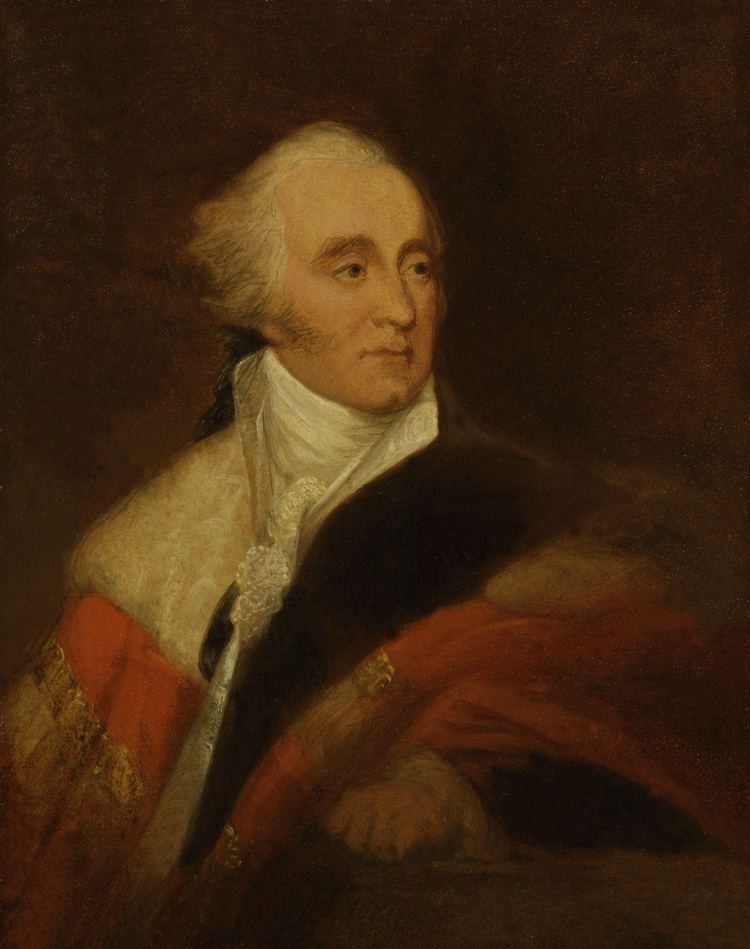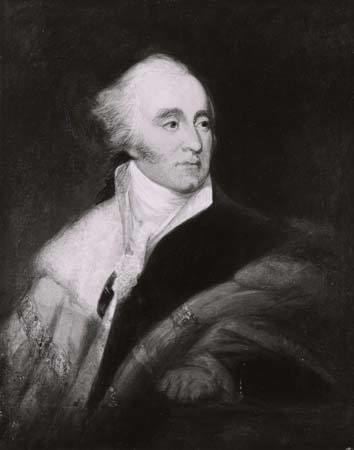Monarch George III Siblings Hugh Elliot Name Gilbert 1st | Nationality British Succeeded by The Earl of Moira | |
 | ||
Born 23 April 1751Edinburgh ( 1751-04-23 ) Alma mater University of EdinburghChrist Church, Oxford Spouse Anna Maria Amyand (m. 1777) Children Gilbert Elliot-Murray-Kynynmound, 2nd Earl of Minto, John Elliot Parents Sir Gilbert Elliot, 3rd Baronet, of Minto, Agnes Dalrymple-Murray-Kynynmound Similar People Hugh Elliot, Henry Elliot, George Augustus Eliott - 1st, Charles Elliot, George VI | ||
Gilbert Elliot-Murray-Kynynmound, 1st Earl of Minto, PC, FRSE (23 April 1751 – 21 June 1814), known as Sir Gilbert Elliott between 1777 and 1797 and as The Lord Minto between 1797 and 1813, was a Scottish politician diplomat. He was viceroy of the short-lived Anglo-Corsican Kingdom from 1793 to 1796 and went on to become Governor-General of India between 1807 and 1813.
Contents

Background and education
Minto was born in Edinburgh, the eldest son of Sir Gilbert Elliot, 3rd Baronet, and Agnes, daughter of Hugh Dalrymple-Murray-Kynynmound. He was the nephew of John Elliott, Governor of Newfoundland, Andrew Elliot 41st Colonial Governor of New York, and of Jean Elliot the poet.
Hugh Elliot was his younger brother and Sir Charles Elliot his nephew. About 1763 Elliot and his brother Hugh were sent to Paris, where their studies were supervised by the Scottish philosopher David Hume, and where they became intimate with Honoré Mirabeau. Having passed the winters of 1766 and 1767 at the University of Edinburgh, Minto entered Christ Church, Oxford, and on quitting the university he was called to the Bar.
Career
In 1776 Minto entered parliament as an independent Whig MP for Morpeth. He became very friendly with Edmund Burke, whom he helped in the attack on Warren Hastings and Sir Elijah Impey, and on two occasions was an unsuccessful candidate for the office of Speaker. He was sworn of the Privy Council in 1793 and in 1794 he was appointed as viceroy of the short-lived Anglo-Corsican Kingdom. In 1797 he assumed the additional names of Murray-Kynynmound and was created Baron Minto, of Minto in the County of Roxburgh. From 1799 to 1801 he was Envoy-Extraordinary to Austria, and having been for a few months President of the Board of Control he was appointed Governor-General of India at the end of 1806. The district of Minto in New South Wales, Australia, (now a suburb of Sydney) was named after him in 1809. In 1810 he successfully requested the release of the British navigator, Matthew Flinders, from his six-year imprisonment on Isle of France (Mauritius). He governed until 1813, during which he expanded the British presence in the area to the Moluccas, Java, and other Dutch possessions in the East Indies during the Napoleonic Wars. He was then created Viscount Melgund, of Melgund in the County of Forfar, and Earl of Minto, of Minto in the County of Roxburgh.
Family
Lord Minto married Anna Maria Amyand, daughter of Sir George Amyand, 1st Baronet, in 1777. Their second son was the naval commander Admiral the Hon. Sir George Elliot while their third son the Hon. John Elliot was a politician. Lord Minto died at Stevenage, Hertfordshire, on 21 June 1814, aged 63, and was buried in Westminster Abbey. He was succeeded in his titles by his eldest son, Gilbert. Lady Minto died in March 1829.
